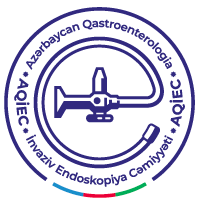ABSTRACT
Foreign body ingestion is a common problem in children under 5 years of age and is one of the main indications for endoscopy. Determining the indications and timing of intervention requires assessment of patient size, type of object ingested, location, clinical symptoms, time since ingestion, and myriad other factors. Here we present a case of the ingestion of multiple sewing needles that migrated to the omentum and liver.
Introduction
Cases of foreign body (FB) ingestion in childhood are common and most are accidental. Over 75% of the more than 100,000 cases of FB ingestion seen in the United States each year occur in children between six months and three years of age [1]. The objects most commonly ingested include coins, toys, batteries, magnets, and sewing pins. Although most ingested objects do not cause a serious health problem, the ingestion of objects such as batteries, multiple magnets, and pins requires immediate intervention. The procedure for removing an FB varies according to the type of FB, its location in the gastrointestinal (GI) tract, and the time since ingestion. In some cases, FB ingestion can go unnoticed and is detected incidentally. Here we present a case of the ingestion of multiple sewing needles that migrated to the omentum and liver.
CASE PRESENTATION
A 2-year-old girl was brought to another health center for cough and was referred to us upon the detection of three needle-like FBs at the level of the stomach on direct X-ray. The patient had no active complaints other than cough and had a history of previous hospitalization due to pneumonia at one year of age. On physical examination, her temperature was 36.6 °C, respiratory rate was 18/min, blood pressure was 90/60 mmHg, and oxygen saturation was 98%. On abdominal examination, the patients abdomen was soft and painless on palpation, with no defense, rebound, or organomegaly. The lower respiratory tract examination was normal, and the patient’s cough was thought to be related to an upper respiratory tract infection.
Abdominal X-ray taken in our hospital confirmed the presence of FB at the stomach level (Figure 1), and esophagogastroduodenoscopy was performed. No FB, bleeding focus, or erosion in the stomach, duodenal bulb, or second part of the duodenum was detected on endoscopy. Because the patient had no active complaints, observation with regular abdominal X-rays was planned. X-rays obtained on days 3 and 5 of follow-up showed that the FBs were in the same location. Laparotomy was planned on day 7 of follow-up because it was not known when the needles were swallowed and the FB had not changed location on serial X-rays. The abdomen was entered through a left transverse incision; however, no FB was observed initially. Intraoperative X-ray revealed four FBs. Two of the FBs were removed from the omentum and the other two were removed from the liver parenchyma, and all were found to be sewing needles (Figure 2). No abscess or bleeding focus was observed at or near the location of the FB during surgery. The patient was discharged in good condition on postoperative day 5.
DISCUSSION
FB ingestion can sometimes cause serious health problems. In general, most children who ingest FBs are under the age of 5 years [1]. In European-based studies, the incidence of ingesting sharp objects in children was reported to be approximately 11% [2]. In the literature, conventional X-ray evaluation from the mouth to the anus is recommended in children who swallow FBs, even if they have no complaints [3]. In general, 100% of metal objects can be visualized by routine X-ray. The average passage time of an ingested FB through the GI tract is 3.6 days [4]. Most sharp objects usually pass through the GI tract without problems [5]. Prior to the development of modern surgical and endoscopic techniques, the rates of morbidity and mortality associated with the ingestion of sharp objects were reported as 35% and 26%, respectively [6]. After 2010, complication rates decreased with the development of diagnostic and treatment algorithms [7].
Delayed intervention increases the risk of complications. Symptoms of pain and dysphagia are common when the FB is located in the upper/middle esophagus. However, up to 50% of patients may be asymptomatic for weeks, even in cases of proximal intestinal perforation [8]. In the literature, it has been emphasized that piercing objects should be removed by laparotomy if they remain in the same place for more than 5-7 days, even if the patient is asymptomatic [9]. In this study, the patient was asymptomatic despite perforation, and the needles were detected on incidentally obtained X-ray. It is known that 15-35% of sharp objects perforate the GI tract [10]. Therefore, when the ingestion of a sharp FB is suspected, emergency endoscopy should be performed even if no FB is seen on direct X-ray.
FBs in the GI tract are usually removed endoscopically. Endoscopic removal is recommended for sharp objects in the stomach (>4-5 cm for children, >6-10 cm for older children) [11]. When the FB is located distal to the ligament of Treitz, it should be surgically removed in symptomatic and asymptomatic patients if progression is not observed on serial X-rays [12]. Pointed FBs that penetrate through the intestinal wall as a result of GI peristalsis can lead to complications in the adjacent organs. Complications reported include perforation, extraluminal migration, abscess, peritonitis, intraperitoneal fistulization, appendicitis, penetration of the liver, bladder, heart, and lung, common carotid artery rupture, aortic esophageal fistula, and death [13,14]. It is extremely rare for a sharp FB to penetrate the intestinal wall and enter the liver because it is an intraperitoneal organ that is not continuous with the intestinal lumen [15]. These cases primarily occur in adults (90%) and are rarely seen in children [16]. Most ingested FBs are managed by waiting for spontaneous elimination, but 10-20% can be removed endoscopically, and less than 1% require surgery [17]. In this study, standing X-ray of the abdomen was followed by endoscopy, which revealed no FB or related complications. All ingested needles were found to have crossed the GI tract by penetrating the wall of the stomach or small intestine into the omentum and liver parenchyma, but no complications such as bleeding, peritonitis, or abscess were detected.
Patients with a history of ingesting FBs, such as sewing needles or pins, that remain in the same location for a week should be carefully monitored. Because of the risk of perforation with sharp and pointed FBs, they should be removed endoscopically if possible or otherwise by surgery.



